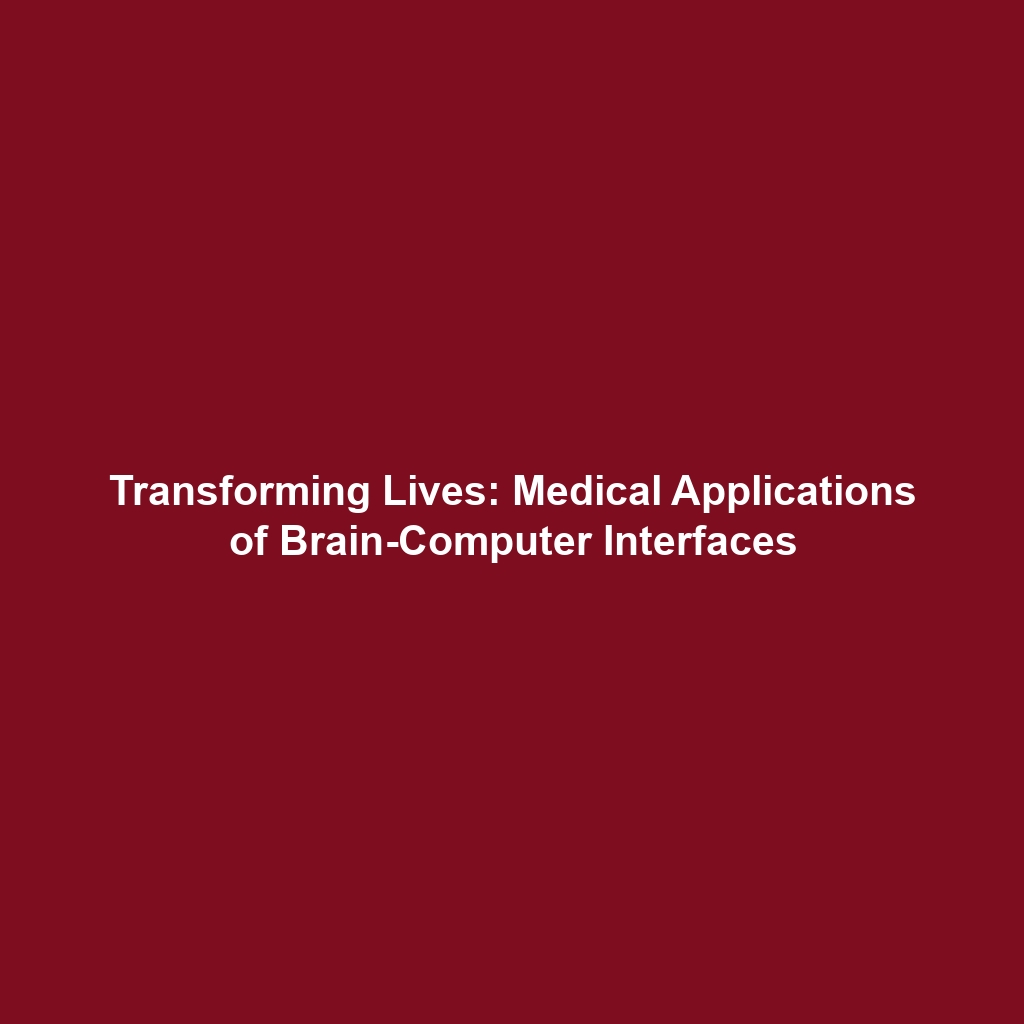Applications of Brain-Computer Interfaces in Medical Science
Category: Brain-Computer Interfaces
Topic: Applications: These BCIs are used for medical purposes, such as restoring movement in paralyzed individuals or controlling advanced neuroprosthetics.
Introduction
Brain-Computer Interfaces (BCIs) represent a groundbreaking development in neurotechnology, allowing direct communication between the brain and external devices. Among their most significant applications are medical interventions aimed at restoring movement for individuals afflicted by paralysis and enabling control over advanced neuroprosthetics. These advancements not only improve the quality of life for users but also pave the way for future therapeutic strategies. As researchers explore the vast potential of BCIs, understanding their applications in the medical field becomes increasingly crucial for both scientific and practical purposes.
Key Concepts
To understand the applications of BCIs in medicine, it’s essential to recognize several key concepts:
- Neuroplasticity: The brain’s ability to reorganize itself, which is vital for recovery and adaptation.
- Signal Processing: Techniques used to decode brain signals and translate them into actionable commands for devices.
- Neuroprosthetics: Devices that replace or enhance the function of a damaged nervous system, relying on BCI technologies.
These concepts highlight how BCIs function effectively in assisting those with mobility impairments, demonstrating their transformative role in the field of Brain-Computer Interfaces.
Applications and Real-World Uses
The practical applications of BCIs are diverse and impactful, particularly in medical settings. Here are some significant examples:
- Restoration of Movement: For individuals with spinal cord injuries, BCIs can facilitate movement by establishing a direct link between the brain and the body.
- Neuroprosthetic Control: BCIs allow users to operate artificial limbs or other assistive devices through thought alone, revolutionizing rehabilitation processes.
- Communication Aids: For patients with severe motor disabilities, BCIs can assist in communication by translating brain signals into text or speech.
These applications not only demonstrate how BCIs enhance patient autonomy but also illustrate the significant implications for rehabilitation and therapy.
Current Challenges
While the potential of BCIs in medical applications is immense, several challenges remain:
- Technical Limitations: The accuracy and reliability of signal interpretation can vary significantly, affecting usability.
- Ethical Concerns: Issues related to privacy and consent arise, particularly when dealing with vulnerable populations.
- Integration with Existing Therapies: Combining BCIs with traditional rehabilitation methods is complex and requires further research.
Addressing these challenges will be crucial for the successful implementation of BCIs in medical settings.
Future Research and Innovations
The future of BCIs looks promising, with several innovations on the horizon:
- Advanced Signal Processing: Improvements in algorithms to enhance the accuracy of brain signal interpretation.
- Wireless Technologies: Development of non-invasive BCIs that allow for greater mobility and comfort.
- Machine Learning Applications: Utilizing AI to predict user intent more accurately based on brain activity patterns.
These innovations signal a bright future for Brain-Computer Interfaces in medical applications, potentially leading to breakthroughs that enhance user experience and efficacy.
Conclusion
The applications of Brain-Computer Interfaces in medical science clearly demonstrate their potential to change lives, specifically in restoring movement for paralyzed individuals and enabling the use of advanced neuroprosthetics. Continued research and development in this area will not only tackle existing challenges but also drive the innovation required for future improvements. For those interested in diving deeper into the field of BCIs, consider exploring related topics such as Neuroplasticity and Neuroprosthetics.

